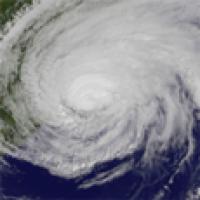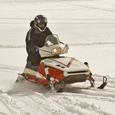How to Prepare for Hurricanes and Tropical Storms

Check out our Weather or Not, 2018 Hurricane Season is Coming blog for the update information.
It’s a fact – 83 million of us in the United States live in an area that could be affected by a hurricane, stretching from the southern tip of Texas around the Gulf Coast and Florida and then up the east coast to the top of Maine. In New York City alone, 2.9 million residents live in hurricane evacuation zones. Around the world, about 80 percent of the population lives within 60 miles (96 km) of the coast, putting an extraordinary amount of people at risk from a tropical cyclone or typhoon.
This Year's Hurricane Forecast
The 2017 early hurricane forecast calls for less than average hurricane forecast - but don't let that fool you into dismissing the risks. If a hurricane strikes, it will still pack the same deadly force as a hurricane during an average year. Find out more on the annual hurricane forecast from Colorado State University Tropical Meteorology Project, including forecasts throughout the summer months.
Hurricane Fact: Even smaller hurricanes pack a mind-boggling amount of power. The heat energy released by a hurricane equals 50 to 200 trillion watts, according to the National Center for Atmospheric Research. That’s about the same amount of energy released by exploding a 10-megaton nuclear bomb every 20 minutes.
Taking a few minutes now to review what your family needs to do and know will help if you are ever faced with hurricane watches and warnings.
Whereas a thunderstorm watch means conditions are favorable for the development of severe weather, a hurricane watch means that a hurricane is anticipated within 48 hours. A hurricane warning is issued 36 hours in advance because getting ready for a hurricane can be difficult in tropical storm force winds. Tropical storm warnings and watches need to be taken seriously as well. Learn more about hurricane watches and warnings from the National Hurricane Center.
Hurricanes (and for those in the Pacific, typhoons) are the boss of weather disasters. They contain tornadoes, they cause tidal surging and floods, they bring winds exceeding 74 miles per hour, and may contain lightning. Most deaths from hurricanes (63%) are caused by inland flooding.
As an adult, I’ve lived through Hurricanes Sandy, Katrina and Isabelle, and had to make plans to take care of family, pets and livestock. It’s a lot of work to make the plan and then follow it! As a kid, I saw Hurricane Agnes cause rivers to overflow their banks by a half-mile. Now, I always have a hurricane preparedness plan in mind.
Here’s what you need to know:
- Your evacuation route and plan. Every state has its own plan, and some larger metropolitan areas will also have their own. Know where to go and when to go. Don’t wait until the last minute.
- Your bad weather preparedness plan. Everybody gets bad weather. Have a plan to deal with it.
- Your safety contact. Select one out-of-town relative or friend to be your safety contact. Write down the contact information for your kids and have them put it in a pocket, so they have it on hand. Include the person’s name, address, telephone number, and if possible, an e-mail address.
- How to stay informed. Getting up-to-the-minute information during a weather event can save lives. Have a NOAA Weather Radio or weather app on your phone that keeps you alerted.
More Information
For more information on building your hurricane plan, visit the National Hurricane Preparedness page for action plans and assessing your families hurricane risks.
Learn more about keeping your home safe in a hurricane from the Federal Alliance for Safe Homes.
Be safe – be prepared.
This blog was written by Kristin Iden.




